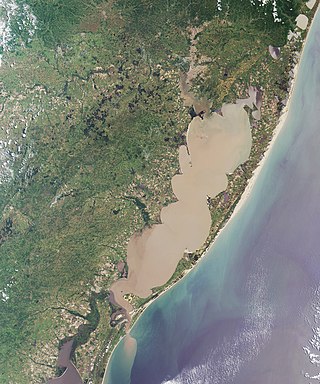
Lagoa dos Patos is the largest lagoon in Brazil and the largest coastal lagoon in South America. It is located in the state of Rio Grande do Sul, southern Brazil. It covers an area of 10,100 km2 (3,900 sq mi), is 180 miles (290 km) long and has a maximum width of 44 miles (71 km).

The Western Gulf coastal grasslands are a subtropical grassland ecoregion of the southern United States and northeastern Mexico. It is known in Louisiana as the "Cajun Prairie", Texas as "Coastal Prairie," and as the Tamaulipan pastizal in Mexico.

Marine ecosystems are the largest of Earth's aquatic ecosystems and exist in waters that have a high salt content. These systems contrast with freshwater ecosystems, which have a lower salt content. Marine waters cover more than 70% of the surface of the Earth and account for more than 97% of Earth's water supply and 90% of habitable space on Earth. Seawater has an average salinity of 35 parts per thousand of water. Actual salinity varies among different marine ecosystems. Marine ecosystems can be divided into many zones depending upon water depth and shoreline features. The oceanic zone is the vast open part of the ocean where animals such as whales, sharks, and tuna live. The benthic zone consists of substrates below water where many invertebrates live. The intertidal zone is the area between high and low tides. Other near-shore (neritic) zones can include mudflats, seagrass meadows, mangroves, rocky intertidal systems, salt marshes, coral reefs, lagoons. In the deep water, hydrothermal vents may occur where chemosynthetic sulfur bacteria form the base of the food web.

Cynoscion acoupa, the acoupa weakfish, blacktail basher or grey snapper, is a species of marine ray-finned fish belonging to the family Sciaenidae, the drums and croakers. This fish is found in the western Atlantic.
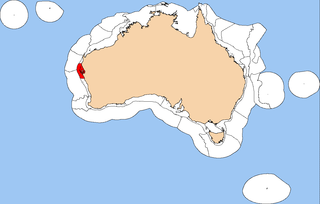
The Central Western Shelf Province, also known as the Shark Bay marine ecoregion, is a biogeographic region of Australia's continental shelf and coastal waters. It includes the subtropical coastal waters of Western Australia.

The Gulf of Mexico is an ocean basin and a marginal sea of the Atlantic Ocean, mostly surrounded by the North American continent. It is bounded on the northeast, north and northwest by the Gulf Coast of the United States; on the southwest and south by the Mexican states of Tamaulipas, Veracruz, Tabasco, Campeche, Yucatán, and Quintana Roo; and on the southeast by Cuba. The Southern U.S. states of Texas, Louisiana, Mississippi, Alabama, and Florida, which border the gulf on the north, are often referred to as the "Third Coast" of the United States.

Cynoscion arenarius, sand seatrout, sand weakfish or white trout, is a species of marine ray-finned fish belonging to the family Sciaenidae, the drums and croakers. It is found in the western Atlantic Ocean. It is closely related to the common weakfish and may be a subspecies of C. regalis.

The marine ecoregions of the South African exclusive economic zone are a set of geographically delineated regions of similar ecological characteristics on a fairly broad scale, covering the exclusive economic zone along the South African coast.
The Bight of Sofala/Swamp Coast is a marine ecoregion along the eastern coast of Africa, characterized by extensive mangrove swamps and coastal wetlands. It extends along the coast of Mozambique, from Angoche to the Bazaruto Archipelago. It adjoins the East African coral coast ecoregion to the north, and the Delagoa ecoregion to the south.
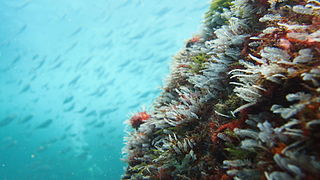
Temperate South America is a biogeographic region of the Earth's seas, comprising the temperate and subtropical waters of South America, including both the Pacific and Atlantic coasts of the continent and adjacent islands. It also includes the remote Gough Island and Tristan da Cunha in the South Atlantic Ocean.
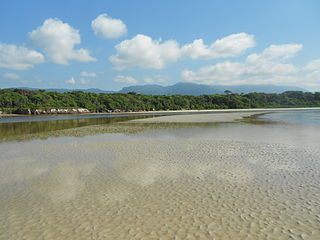
The Ilha Grande mangroves ecoregion covers a series of disconnected salt-water and brackish mangrove forests along the southeastern coast of Brazil on the South Atlantic Ocean. The ecoregion is defined as covering the mangroves found between the Paraíba do Sul River in the north to Florianópolis in the south. This coastal region is the most densely population region of Brazil, and many of the mangroves are in close proximity to ports and industrial cities. A number of ecological reserves have been established to protect the high biodiversity of the mangroves, recognizing their importance to migratory birds, and as nursery habitat for juvenile fish, crabs, shrimp, and mollusks.

The Guianan marine ecoregion stretches along the middle of the northeast coast of South America, touching Venezuela, Guyana, Suriname and French Guiana. It extends about 200 miles offshore, with the warm Guianan Current moving east-to-west through the region. This current brings in fresh, turbid waters from the mouth of the Amazon River to the east. As the current exits the ecoregion to the west it contributes an estimated 70% of the waters of the Caribbean Sea. A very large oil field has been recently discovered in the Guyana-Suriname Basin of the ecoregion. The Guianan is one of two ecoregions in the North Brazil Shelf province, a Large marine ecosystem (LME). The Guianan is thus part of the larger Tropical Atlantic realm.

The Amazonia marine ecoregion covers the coastal marine environment off the mouth of the Amazon River on the continental shelf of Brazil. The warm North Brazil Current moves east-to-west across the river's outlet, carrying turbid, fresh water to the northwest towards the Caribbean Sea. The Amazonia is one of two ecoregions in the North Brazil Shelf province, a large marine ecosystem (LME). It is thus part of the Tropical Atlantic realm.

The Northeastern Brazil marine ecoregion covers the coastal marine environment around the Northeast Region of Brazil. The marine ecoregion extends from the mouth of the Parnaíba River in the west around the eastern point of the Brazilian mainland and south to the Bay of All Saints. The warm South Equatorial Current feeds warm tropical water into the region from the east. The Northeastern Brazil ecoregion is one of two coastal marine ecoregions in the Tropical Southwest Atlantic marine province. It is thus part of the Tropical Atlantic realm.

The Eastern Brazil marine ecoregion covers the coastal marine environment along the middle of the east coast of Brazil. The ecoregion extends south from the Bay of All Saints to Cabo Frio just east of the city of Rio de Janeiro. The Brazil Current enters from the east, feeding warm subtropical water to the south along the coast. The influence of the tropical waters leaves the ecoregion relatively oligotrophic. The Eastern Brazil ecoregion is one of two coastal marine ecoregions in the Tropical Southwest Atlantic marine province. It is thus part of the Tropical Atlantic realm. .

The Southeastern Brazil marine ecoregion covers the warm coastal waters to 250 miles offshore of southeastern Brazil, from the latitude of Rio de Janeiro in the north to Florianópolis in the south. Marine diversity is supported by local upwellings in the north and the inflow of the Brazil Current. The region is one of transition from a tropical to a warm temperate environment. The marine ecoregion is one of four coastal marine ecoregions in the Warm Temperate Southwestern Atlantic marine province. It is thus part of the Temperate South America realm. .
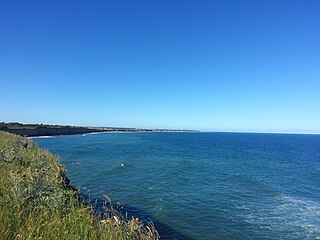
The Uruguay - Buenos Aires Shelf marine ecoregion covers waters offshore of Uruguay, the mouth of the Rio de la Plata), and Buenos Aires Province of Argentina. It has an area of 258,490 square kilometres (99,800 sq mi) and a coastline of 1,300 kilometres (810 mi). Marine biodiversity is very high due to the mixing of currents, the mixing of fresh and salt water, the mixing of temperatures, and the broad, shallow continental shelf. Large amounts of nutrients arrive from the northwest flowing Malvinas Current and from the continental runoff of the Rio de la Plata. Aside from high populations of fish there are colonies of marine mammals, sea turtles, and seabirds.

The Rio de la Plata marine ecoregion covers the mouth of the Rio de la Plata, between the shores of Argentina an Uruguay and inshore of the continental shelf of the Uruguay - Buenos Aires Shelf marine ecoregion. The ecoregion is an important reproductive and nursery ground for marine life, as the river runoff provides nutrients for larval and juvenile phases, the shallow and protective waters admit light, and there is of mixing fresh and salt waters. The region is in the Warm Temperate Southwest Atlantic marine province, a part of the Tropical Atlantic realm. .

The North Patagonian Gulfs marine ecoregion covers the gulfs and continental shelf of the middle Patagonian coast of Argentina. As the name suggests, the coast is indented with large gulfs - San Matías Gulf (north), Golfo Nuevo (middle) and San Jorge Gulf (south). The broad, protected areas and rocky reefs support abundant fisheries. The abundance of rocks, promontories and islands support breeding sites for marine mammals and colonies of seabirds. The area is, however, under pressure from over-harvesting of mollusk and crustacean beds, and from development and tourism. The entire ecoregion is on the Patagonian Shelf. The ecoregion is part of the Magellanic marine province. It is thus part of the Temperate South America realm. .



















